| Architect |
Philippe Starck in collaboration with Thibaut Mathieu[ |
|
Date Built |
Opened to the
public in stages between 18 May and 24
October 2010 |
| Location |
Arriquíbar Plaza, 4, 48010 Bilbo |
| Description |
|
|
Azkuna Zentroa is a
multi-purpose venue in central Bilbao
created within a building designed by
Ricardo Bastida and completed in
1909. The centre's website
reflects on that history. "...In
1905 a very young Ricardo Bastida
was commissioned to build a new wine
exchange in Ensanche de Albia
quarter, Bilbao, and he outlined a
large functional advanced industrial
building in a modernist style. When
the activity of this building was
transferred to the new wine exchange
in Recalde in the 1970s, it was left
waiting to be put to a new use.
Today the 43,000 square metres of
Azkuna Zentroa arise over the old
wine warehouse."
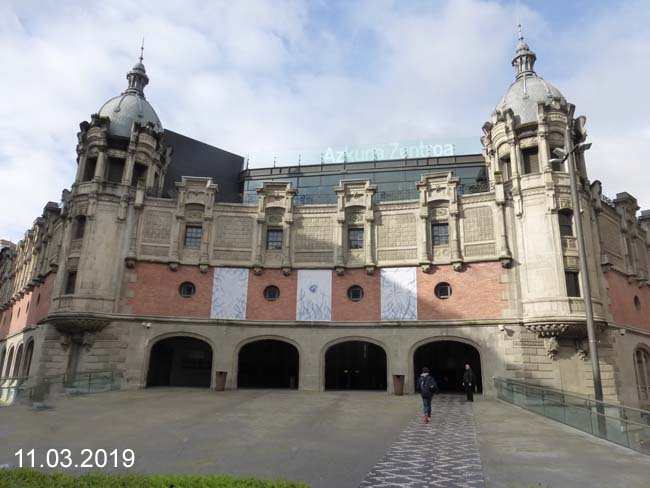 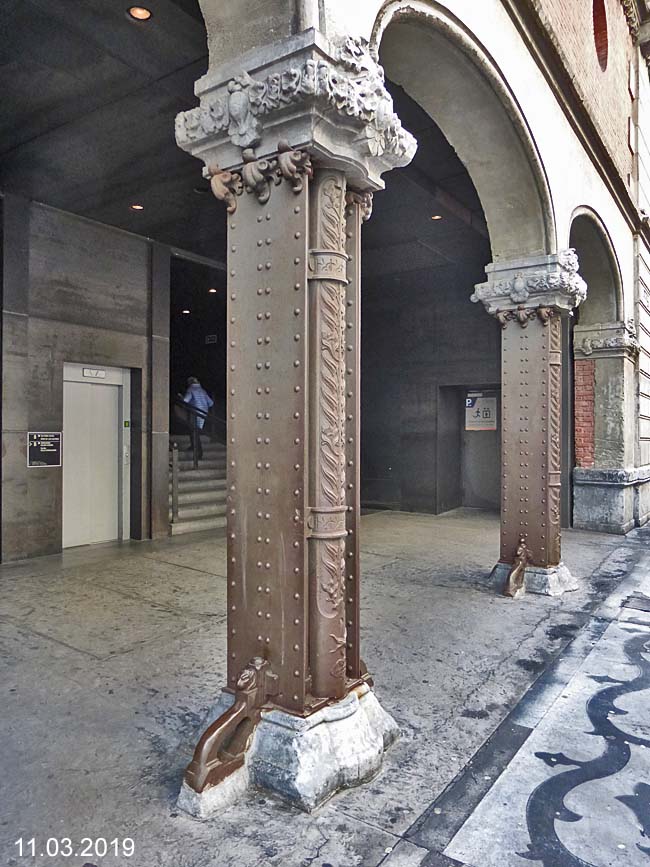 Today within this old building you will find a multiplex cinema, fitness centre, library, showrooms, an auditorium, shops, and a restaurant. The architect of this transformation was Phillipe Starke. "Discovering an object or place designed by Philippe Starck, is to enter a world of intense imagination, fertile surprises and phantasmagoria. This creator, designer and unusual polymorphic architect, has been constantly present untarnished by conventionalisms for over 30 years in our daily belongings, creating “good” rather than beautiful objects and iconic destinations which take the members of his «cultural tribe» to other places beyond themselves, and above all, he takes them to the best." "The 43 pillars sustaining the 3 buildings of Azkuna Zentroa symbolise the millions of columns, and infinity of cultures, architectures, wars and religions through which man has passed throughout history. Lorenzo Baraldi, the Italian stage designer, has materialised Philippe Starck’s cinematographic vision of this space in his own particular interpretation of the place. Entering the Azkuna Zentroa Atrium of Cultures is to immerse oneself in the journey through the cultural." 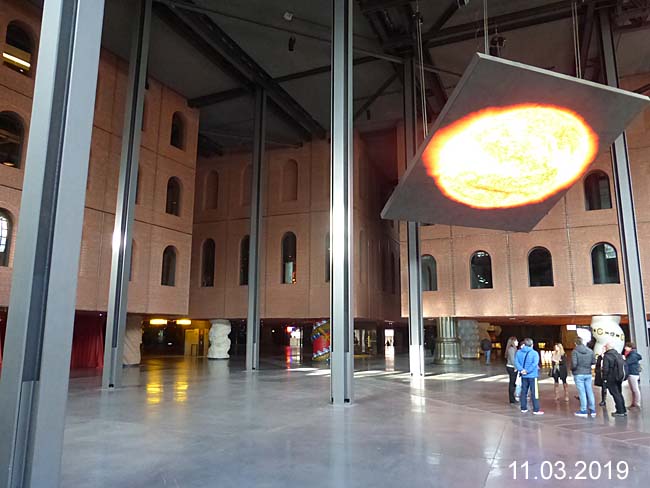 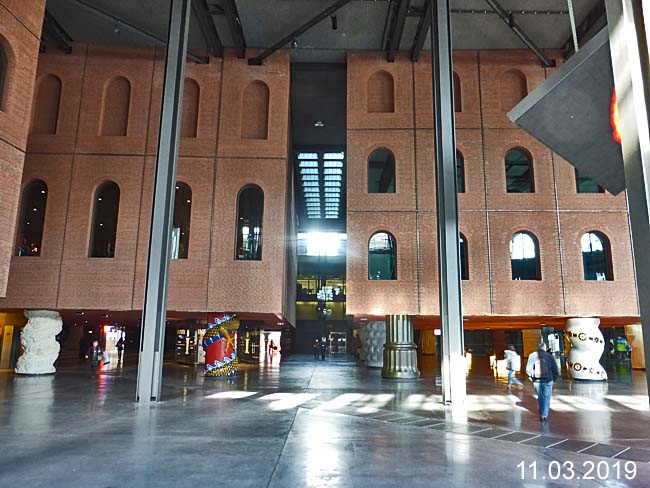  "The choice of
materials to manufacture the 43
columns is also a journey through
the history of the raw materials.
First the oldest were chosen, such
as marble, brick, wood and bronze.
Then, by way of testimony to modern
times, cement and steel. And
finally, two elements used since
ancient times were proposed, yet are
virtually unknown, namely Lecce
stone and glazed terracotta."
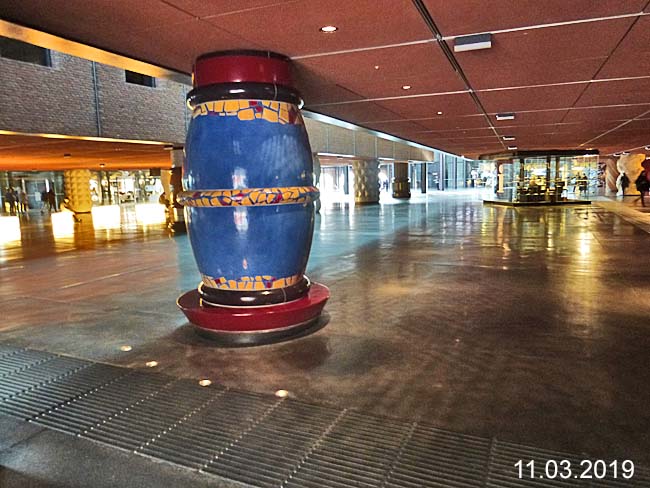 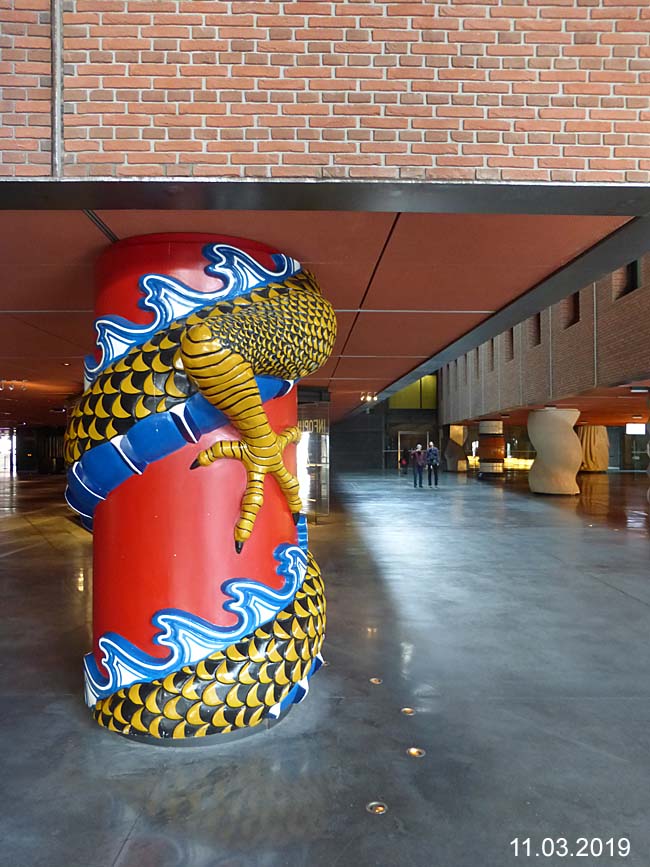 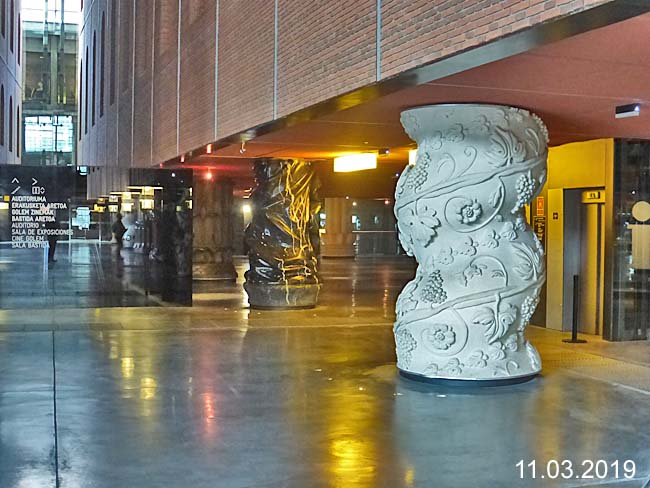 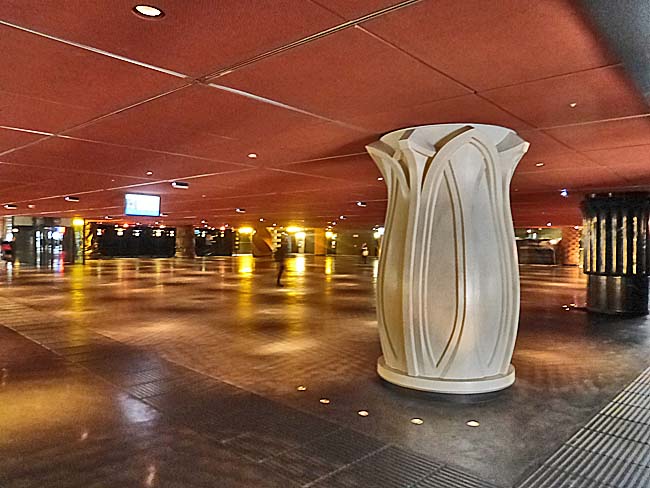 Looking up you might
be excused for thinking you are seeing a
skylight but in fact you are seeing the
glass bottom of a rooftop swimming pool.
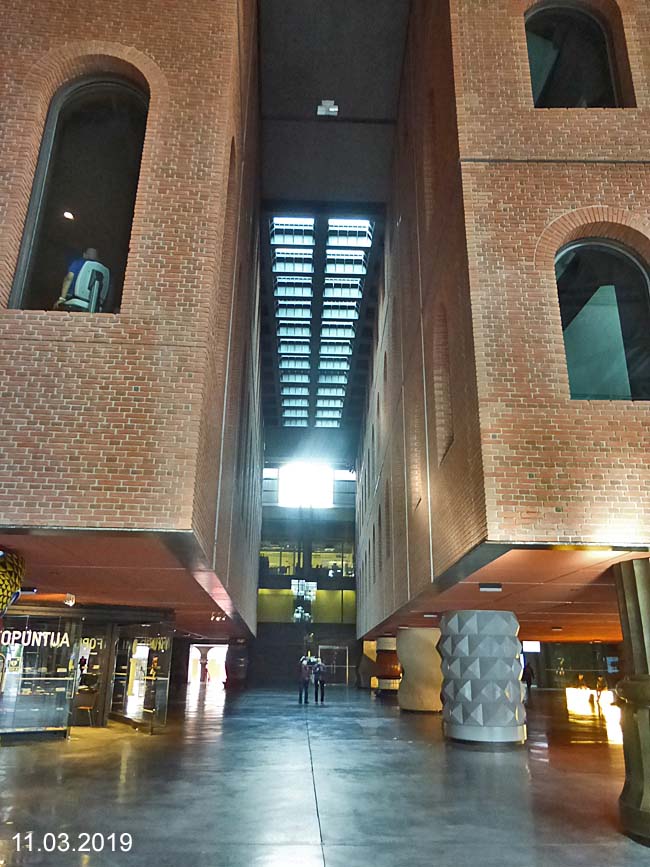 |
|
|
Azkuna
Zentroa, Bilbao, Spain
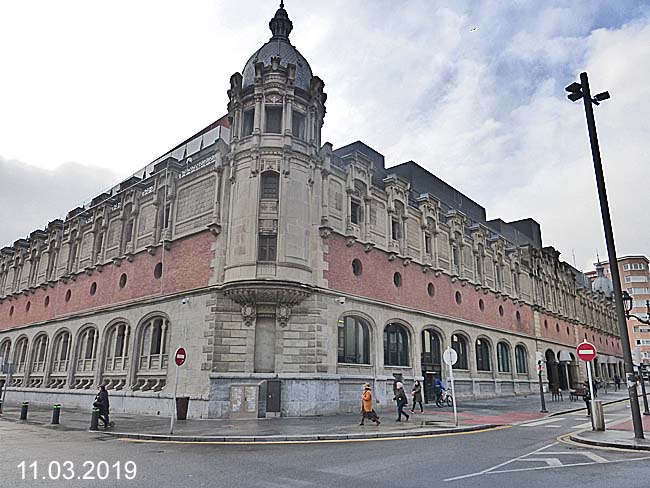 |
